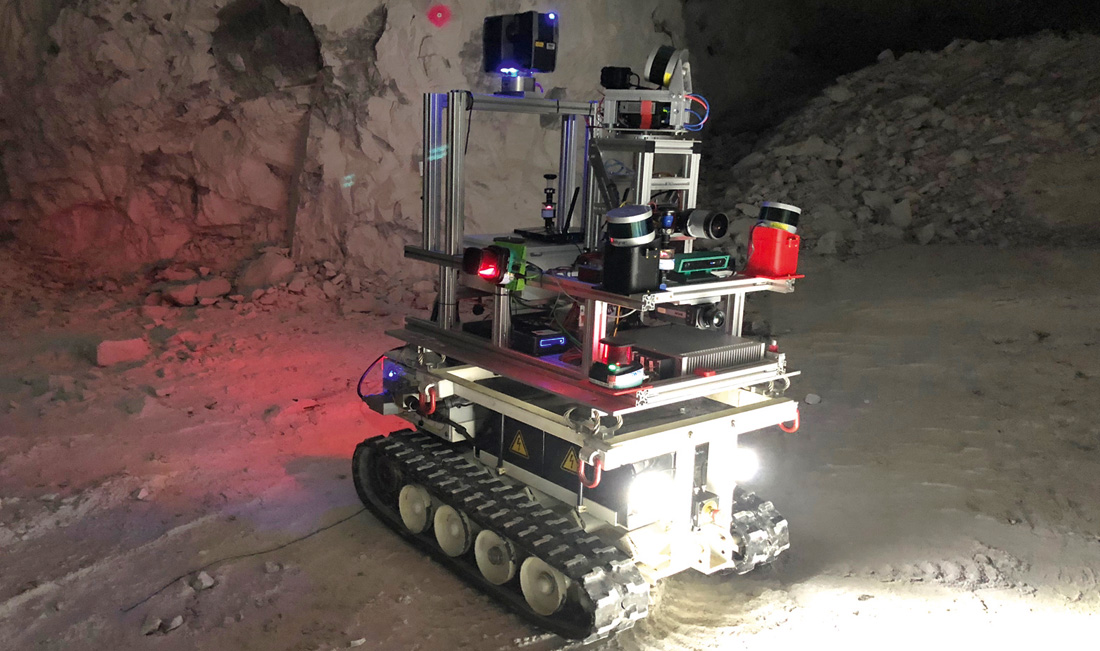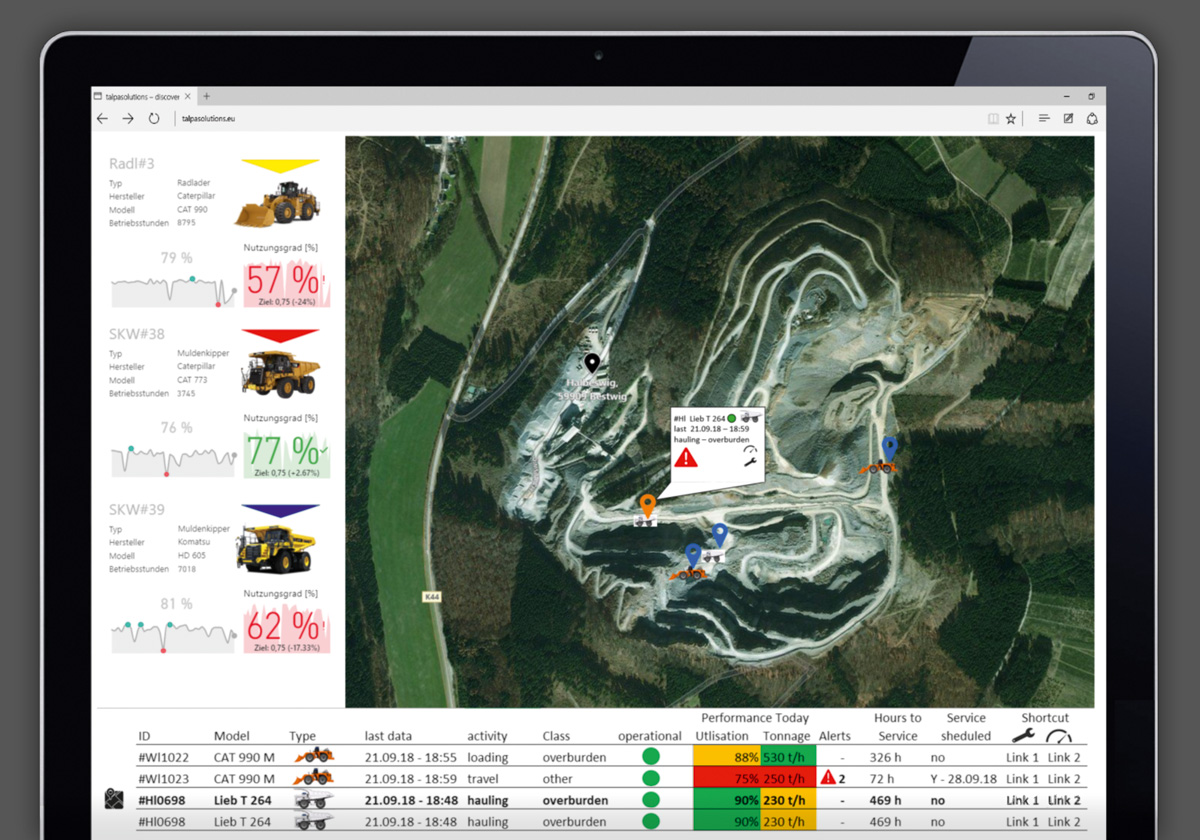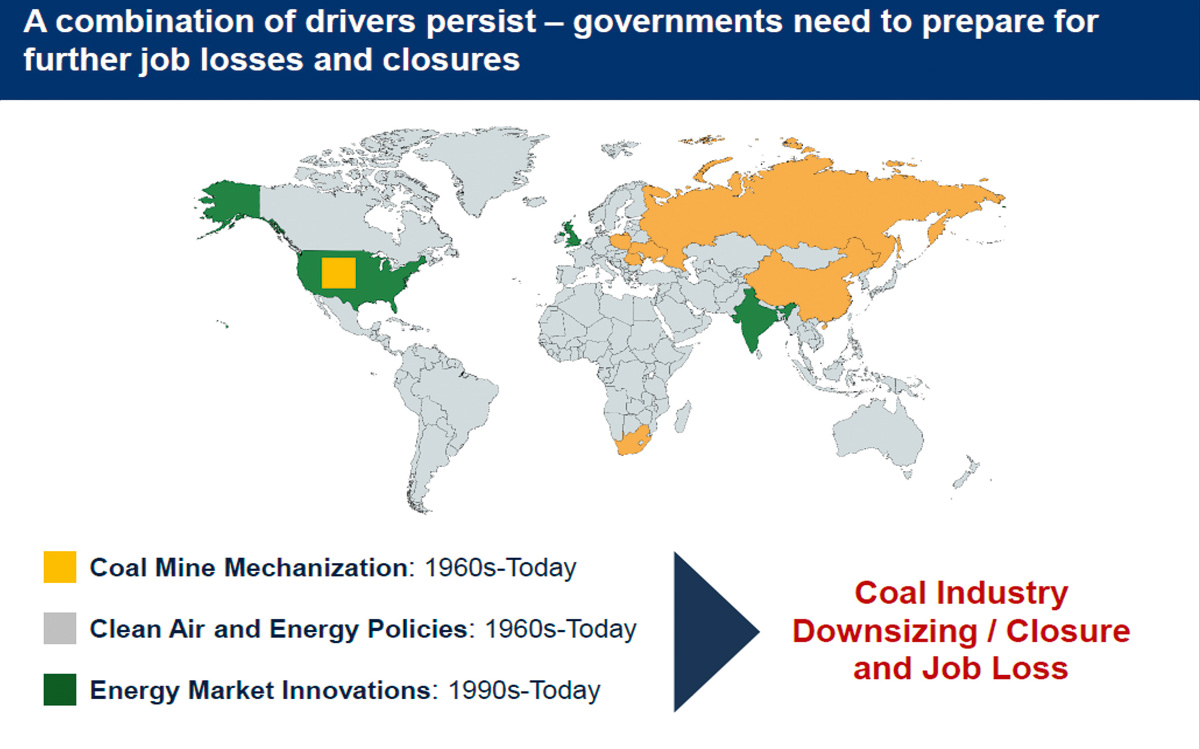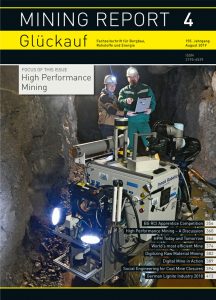Fluctuating raw-material prices, high capital investments, long development times, the unique character of each area of deposits and the resulting uncertainty of the geological information they provide – these have always represented challenges for the mining industry. The depletion of older deposits means having to develop new sources of supply in difficult geological conditions, at deeper levels and in remote areas that are climatically and geographically difficult to access. Add to this the evolving manpower requirements and a growing demand for technical skills of the workforce. The future will raise questions both as regards raw material needs and, also to that effect, the nature of the outside influences that are set to affect the mining sector.
Read moreWith my best regards // Mit freundlichem Glückauf
Dipl.-Ing. Andreas-Peter Sitte
Chief Editor Mining Report Glückauf, Essen
What is High Performance Mining? A Discussion

Fig. 2. Platform for exchanging and networking: International Conference on High Performance Mining. // Bild 2. Plattform für Austausch und Vernetzung: International Conference on High Performance Mining. Photo/Foto: RWTH Aachen (B. Spaeth)
Authors: Univ.-Prof. Dr.-Ing. Elisabeth Clausen, Aarti-Mona Sörensen M. A., Institute for Advanced Mining Technologies (AMT), RWTH Aachen University, Aachen/Germany
Read moreHigh Performance Mining Today and Tomorrow – A Conversation with George Hemingway
George Hemingway leads the Innovation Practice for Stratalis, a New York-based growth strategy consultancy dedicated to helping companies to become future-focused and to develop the foresight, flexibility and focus to win in uncertain markets. Through his Seven-Lenses technique, he helps companies to outperform others by facing the future in a focused and guided way.Aarti-Mona Sörensen is a scientific research assistant at the Institute for Advanced Mining Technologies at RWTH Aachen University. In 2018, she was a leading part in the organization and implementation of the first International Conference on High Performance Mining at RWTH in Germany with 175 professionals from over 20 different countries.
Authors: George Hemingway, Stratalis, New York/USA, Aarti-Mona Sörensen M. A., RWTH Aachen University, Aachen/Germany
Read moreImproving Productivity Performance in Aitik: An Insight into the World’s most efficient Mine
Declining ore grades and increasing extraction costs have given a high priority to productivity in operational mines. However, improving productivity in an industry with decades long plans and budgets requires a certain level of agility. Boliden´s Aitik open pit copper mine in Northern Sweden has been through a long journey to reach the title of world’s most productive open pit copper mine. This article discusses the different factors contributing to the success of Aitik, from long-term strategic planning to incremental and short-term adjustments and from implementing and integrating new technologies to tackling “the human factor”.Authors: Ali H. Beyglou, Boliden Mineral AB, Stockholm/Sweden and Luleå University of Technology, Luleå/Sweden, Aarti-Mona Sörensen M. A. and Univ.-Prof. Dr.-Ing. Elisabeth Clausen, RWTH Aachen University, Aachen/Germany, Prof. Dr.-Ing. Håkan Schunnesson, Luleå University of Technology, Luleå/Sweden
Read moreDigitizing Raw Material Mining – End-to-End Integration into an IIoT Platform for the Analysis of Machine Data

Fig. 4. Visualization of fleet key figures in maps. // Bild 4. Visualisierung von Flottenkennzahlen in Karten. Source/Quelle: talpasolutions
Authors: Dr.-Ing. Michael Suciu und Dipl.-Ing. Sebastian Kowitz, talpasolutions GmbH, Essen/Germany
Read moreEpiroc Control Tower – The Digital Mine in Action
The recently by Epiroc developed Control Tower is a central data processing and automation unit. The Control Tower is much more than a showroom – it is part of Epiroc’s strategy to support customers in taking the right steps in terms of security, productivity and improvement. Epiroc’s High-Tech Control Tower allows remote-controlled and automated machines to be explored and controlled anywhere in the world. In addition, the control tower incorporates Epiroc information management solutions such as data processing via telematics or other integrated systems. Thus, the new Control Tower is a great opportunity to help customers digitize – by joining several cutting-edge technologies.Authors: Dipl.-Ing. Joel Fuchs und Dipl.-Ing. Christel Füllenbach, Epiroc Deutschland GmbH, Essen/Germany
Read moreSocial Engineering for Coal Mine Closures – a World Bank Report, the International Research Deficit and Reflections from a German Perspective

Fig. 4. Main drivers of coal mine closures. // Bild 4. Haupttreiber für Stilllegungsprozesse im Kohlebergbau. Source/Quelle: Weltbank 2018
Author: Dr. Kai van de Loo, Gesamtverband Steinkohle (GVSt), Essen, und Lehrbeauftragter Technische Hochschule Georg Agricola (THGA), Bochum
Read moreThe German Lignite Industry in 2018
Germany’s domestic lignite output decreased by 5.0 Mt, which equals 2.9 %, from 171.3 Mt to 166.3 Mt between 2017 and 2018. 2018’s extracted lignite had a net calorific value of 51.0 Mtce. 148.2 Mt or almost 90 % of that output were used in utility power plants supplying the general public. This translates into a decrease of 3.3 % compared to the previous year. 14.6 Mt were used in the factories of the lignite mining industry for the manufacture of solid products. 2.5 Mt were used to generate electricity in mine-mouth power plants. 0.9 Mt accounted for other sales of raw lignite and changes in stocks. Lignite’s contribution to Germany’s total gross electricity production amounted to 22.5 % in 2018.Authors: Dipl.-Volkswirt Uwe Maaßen, Statistik der Kohlenwirtschaft e.V., Bergheim, und Dr. rer. pol. Hans-Wilhelm Schiffer, World Energy Council, London/UK
Read more





















